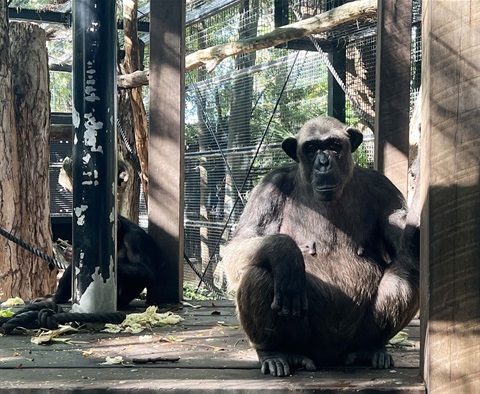Concerns Rise Over 1080 Bait Use in Australia
Most Australians have heard of 1080 bait. Many of us know that it's a dangerous and toxic substance used as a poison, but not everyone is aware of exactly why it's used in the first place.
Growing opposition to the use of 1080 has sparked fears that its use may be stopped, causing invasive threats to proliferate in the Aussie outback -- with one authority arguing it serves as a lifeline for Australia's most threatened animals as well as the country's most vulnerable citizens.
"It's the thin green line we have that protects our threatened animals," Gillian Basnett from the Centre for Invasive Species Solutions told Yahoo. "Without it, we are choosing cats and foxes, rabbits and pigs over our native wildlife and that is not a choice I would make."
Gillian, who runs the nation's feral cat and fox response, argues that negativity surrounding the baiting program runs the risk of "losing it as an option". "If we lost the use of 1080 as a tool and as a bait, the outcome would be devastating to our wildlife and our farmers," she said.
"It's a hard thing to talk about because we don't want to go out and kill animals but we have introduced them, they're having an impact and it's up to us to do something about it."
Sodium fluoroacetate, known commonly as 1080, is an odourless, tasteless white powder that is diluted with water to concentrations specific to the species being targeted.
The active ingredient is a naturally occurring toxin found in more than 30 species of native Australian "poison pea" plants from the Gastrolobium genus. Because of this, native species have developed a high tolerance to the toxin which invasive species do not have, which means if ingested, researchers say they won't be harmed.
However, recent research by Deakin University found a large number of poison baits buried according to best practice methods are being dug up and eaten by non-target animals.
The research found that foxes and dingoes accounted for just 12 per cent of the baits dug up or eaten. Of the 146 interactions with baits, 88 per cent were non-target species - primarily, native mice species such as Mitchell's hopping mouse (Notomys mitchellii) and silky mice (Pseudomys apodemoides).
"Our research shows predator baiting has the potential to harm more native species than previously realised," scientists said.
But Gillian argues that this contributes to a "misunderstanding" that 1080 kills native wildlife which is "not the reality". "To have effective control it needs us to be able to use all of the tools we have available. That means lethal control," she said.
Australia's mammal extinction crisis is one of the worst in the world, with Australia's nature conservation councils describing it as a "big disappointment". This largely comes from the threat posed by thousands of invasive species continuing to wreak havoc on our precious native wildlife. Across the country, predators like foxes and feral cats have resulted in dozens of native species being driven to the brink -- or wiped out entirely.
"We've already lost 32 species that have died out with predation of cats and foxes and likely dingoes," Gillian said. Without 1080, she says we'd lose "so much more".
Across the country, other tactics are being used to win the fight surrounding these prolific invaders such as huge fences to keep them out. Viruses have been developed to help reduce rabbit populations and a herpes virus has been proposed to stop invasive carp.
But Gillian said that 1080 is the best tool to manage foxes and cats. "It's environmentally sustainable, doesn't accumulate in the environment, it's effective. It is the thing that we have holding back the impacts [of cats and foxes]."
She admits we should "100 per cent look for alternatives", but cautions that the development of viruses could take "decades".
"If we stopped 1080 now, we're looking at 50-100 years before that is effectively controlled and we'll have lost more species," she said.
Gillian admits that it's "hard" to sell poison as a method of eradication. "I fully can understand the difficulty people have with that idea. It's hard to think about. But it is also a great opportunity we have to right some wrongs of the past.
"We introduced cats and foxes. It's not their fault but they are causing a lot of damage and we need to put things right and make that choice and support that choice.
"We need the public to support land managers in doing it and we need to recognise that the benefits to our native wildlife far outweigh the risks."
Not only is wildlife impacted, but so too are Aussie farmers who are seriously impacted by this predation.
Cats spread diseases and can "really impact" the financial and emotional well-being of the farming community.
One of the more controversial target species of 1080 baiting programs is dingoes, or wild dogs. While they are protected in some states like Victoria, in others they are deemed a pest.
Dingoes have long caused problems with livestock in Australia, with a 5,614km fence being built across Australia to keep them away from farm animals.
Past research has suggested that hybrids of dogs and dingoes were common in the wild across Australia -- and this research was used to defend the culling of these animals. But more recent research shows dingoes are not breeding with domestic dogs in the wild.
"We hear a lot that 1080 kills native wildlife and what people are talking about is dingoes," Gillian said.
Because dingoes have been present in Australia for up to 8,000 years, they haven't had as much time to develop tolerance to the bait.
"It will kill dingoes, and that is a reality," she said. She believes that arguing about the genetics of such predators "muddies the water" because regardless, they are being targeted.
"We manage over-abundant species" that are having an impact on vulnerable wildlife, she explained.
"Dingoes can be that in some areas. In areas where dingoes, foxes and cats are all prevalent in the same area, vulnerable species like koalas, bilbies and rock wallabies don't stand a chance.
"We're managing the impacts of predation regardless of which of that it is," she said.
For concerned pet owners, Gillian warns that it is their responsibility to keep their pets safe.
"People see the outcomes and have that emotional connection to their pet which is totally understandable," she said of pet dogs who have ingested the poison and died, prompting calls to ban the product.
"I can totally understand the trauma of having your pet die, it is tragic," she said. "But we also need to take responsibility for our pets by not taking dogs where we shouldn't, keeping pet cats contained and protecting them from these impacts.
"If there are baiting programs undertaken to protect our wildlife, they are signposted and so it's important to heed those signs, take notice of areas where there is baiting and to not take your pets into those areas," she said.
For those roadtripping in cars and caravans to go camping or travel the country, she advises owners to check with landowners to find out where baiting programs are happening.
"Do the research and make sure where you're taking your pet is allowed and it is safe to do so," she said.













